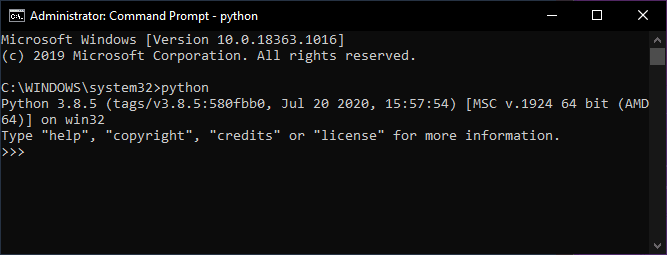

The main differences between these two libraries are the ability of PyPDF2 to encrypt files and the ability of PDFrw to integrate with ReportLab. The PDFrw library is another alternative to PyPDF2. & echo "$ERROR_MSG" & return 1ĮRROR_MSG='Pip not installed in current conda environment.'ĮRROR_MSG="$ERROR_MSG\nUse \`conda install pip\`"ĮRROR_MSG="$ERROR_MSG to install pip in current conda environment.If you are using Anaconda, you can install PyPDF2 using the following command: conda install pyPDF2 To ensure using the pip installed inside conda environment without having to type the lengthy /home/username/anaconda/envs/env_name/bin/pip, I wrote a shell function: # Using pip to install packages inside conda environments.ĮRROR_MSG="$ERROR_MSG\nUse \`source activate ENV\`"ĮRROR_MSG="$ERROR_MSG to enter a conda environment." Then the only pip you got is the system pip, which will install packages globally.īus as you can see in this issue, even if you did either of the procedure mentioned above, the behavior of pip inside conda environment is still kind of undefined. If you didn't add pip when creating conda environment conda create -n env_name pipĪnd also didn't install pip inside the environment source activate env_name It should read something like: requirement already satisfied and then the path You can see it if you scroll up in the terminal.

There is no need to point to an environment/ pathįor future reference, you can find the folder your packages are downloading to if you happen to have a requirement already satisfied.

The command pip references a specific pip file/shortcut ( which -a pip tells you which one). This installs the package to the anaconda library directory rather than to the library directory associated with (the non-anaconda) pip Pip install, you can use the module flag -m with python so that it uses the anaconda python for the installation python -m pip install If you have a non-conda pip as your default pip but conda python is your default python (as below) >which -a pip Or you could use your python version associated with anaconda !python3.6 -m pip install package-name In your jupyter notebook, you can install python packages through pip in a cell this way !pip install package-name
Conda install pypdf2 code#
If it is version 10.x.x or above, then install your python package with this line of code subprocess.check_call() If you have pip installed in anaconda you can run the following in jupyter notebook or in your python shell that is linked to anaconda pip.main()Ĭheck your version of pip with pip._version_. Since some of the conda packages may lack support overtime it is required to install using pip and this is one way to do it It will automatically install to the anaconda environment without having to use conda install package-name This should now successfully install packages using that virtual environment's pip!Īll you have to do is open Anaconda Prompt and type pip install package-name Install new packages by doing /anaconda/envs/venv_name/bin/pip install package_name.

It should be somewhere like /anaconda/envs/venv_name/. This will install pip to your venv directory.įind your anaconda directory, and find the actual venv folder. Run conda create -n venv_name and conda activate venv_name, where venv_name is the name of your virtual environment. For others who run into this situation, I found this to be the most straightforward solution:


 0 kommentar(er)
0 kommentar(er)
